In the heart of southern Mexico, surrounded by mountains, ancient ruins, and fertile valleys, lies one of the most extraordinary centers of folk art in the world: Oaxaca. Known for its textiles, pottery, and carved masks, this region has also given birth to one of Mexico’s youngest yet most influential artistic traditions: the colorful and imaginative Oaxacan wood carvings.
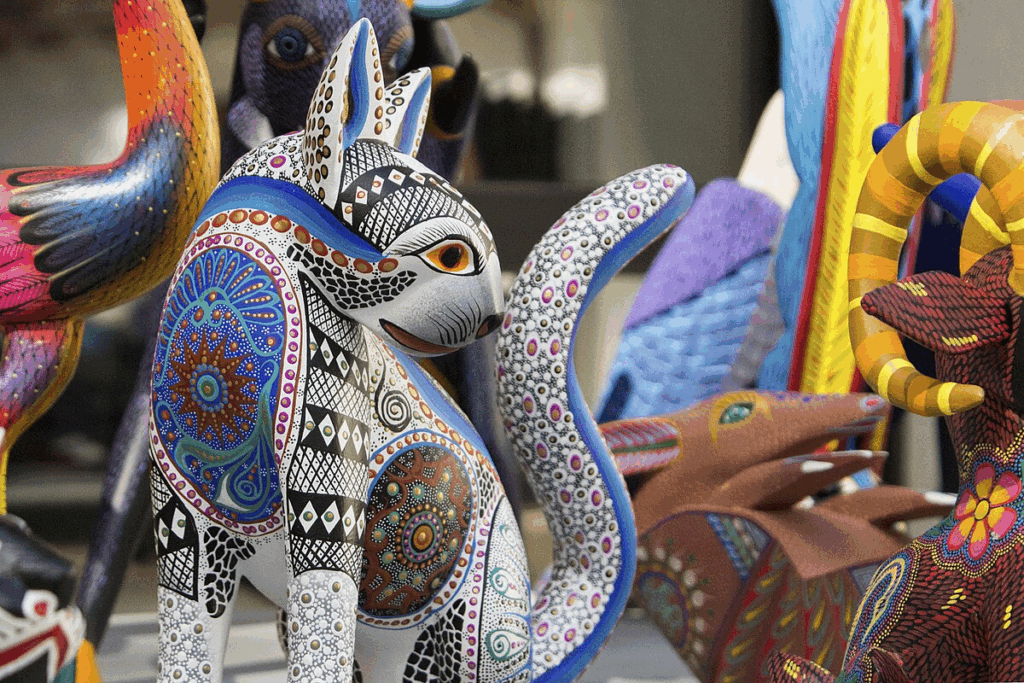
Although less than sixty years old, this craft has become a symbol of Mexico’s creativity, blending Indigenous spirituality, colonial history, and modern artistry. These vibrant sculptures, known locally as monos de madera or alebrijes oaxaqueños, have transformed small rural villages into thriving artistic communities.
Origins of Oxacan Wood Carvings
Long before the modern alebrije was born, the people of Oaxaca already had a deep connection to wood as a sacred material.
In pre-Hispanic times, the Zapotec and Mixtec peoples carved wooden totems, masks, and ritual figures used in ceremonies that honored nature, ancestors, and gods. These carvings were not decorative but spiritual objects that bridged the visible and invisible worlds.

Following the Spanish conquest, Indigenous carvers adapted their skills to new religious demands. They sculpted saints, angels, crucifixes, and altarpieces for newly built churches and monasteries. Wooden masks also became central in religious dances, allowing communities to reenact biblical stories and local myths. These early colonial pieces carried a fusion of two worlds: the Indigenous reverence for spirit within matter and the Catholic imagery of salvation and devotion.
After Mexico’s War of Independence, the carving tradition declined. With limited demand for religious pieces, artisans turned to making toys, masks, and miniatures as side income. These small, rustic carvings survived quietly for decades, keeping the tradition alive until Oaxaca opened up to the outside world once again.
The Rise of Modern Oaxacan Carving
In the 1940s, the construction of the Pan-American Highway changed everything.
Oaxaca, once isolated by mountains, suddenly became accessible to visitors. Tourists and art dealers arriving in Oaxaca City and nearby Monte Albán discovered the beauty of handmade crafts. Folk art stores began to appear, creating a new market for artisans who had previously worked only for local festivals or family use.

Among the carvers who would shape the future of Oaxacan art were three men whose talent and vision transformed a regional tradition into a global movement.
Manuel Jiménez (1919 – 2005): The Visionary from Arrazola
Manuel Jiménez, born in San Antonio Arrazola, was the first to give this new art form its identity.
As a young shepherd, he spent long hours in the hills carving small animals and masks from soft wood. By the 1950s, he was selling his carvings at the Monte Albán archaeological site, where tourists stopped to buy souvenirs.

In 1957, Arthur Train, an art gallery owner from Oaxaca City, discovered Jiménez’s work and immediately recognized his originality. Train became his promoter, helping him sell to collectors and museums.
Jiménez’s carvings were unlike anything seen before. He combined Catholic saints, local animals, and dreamlike beings inspired by Zapotec mythology. His most iconic subjects were the nahuales which are human-animal spirit guides said to accompany people through life and protect them after death.
By the 1970s, Jiménez’s work had reached international audiences. Collectors such as Nelson Rockefeller acquired his pieces, and museums began to exhibit them as examples of Mexico’s evolving folk art.
What set Jiménez apart was not only his skill but his philosophy. He considered his carvings spiritual beings, not mere decorations, and he infused each one with personality, humor, and reverence for nature. His imagination gave birth to a completely new way of seeing Oaxaca’s woodcraft, one that celebrated fantasy as much as faith.
Isidoro Cruz (b. 1934): The Heart of San Martín Tilcajete
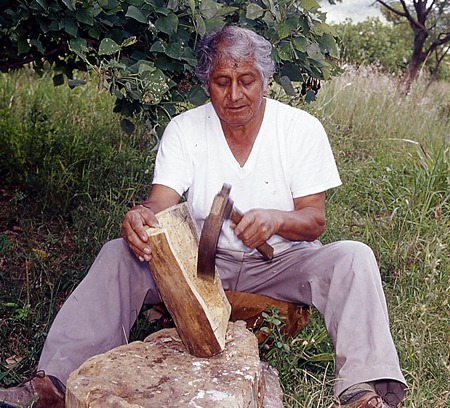
At around the same time, another carver, Isidoro Cruz, was finding his path in the nearby village of San Martín Tilcajete.
He began carving at age thirteen while recovering from a long illness. Using simple knives and copal branches, he made small figures to pass the time. His work caught the attention of Tonatiuh Gutiérrez, who later became director of FONART, the national fund for folk art.
Gutiérrez encouraged Cruz to keep carving and helped him gain visibility in Oaxaca City.

When Cruz was appointed manager of the state’s craft promotion center, he used his position to help his neighbors sell their carvings too. He believed that art should uplift the community, not just the individual.
His openness in sharing techniques and ideas made Tilcajete a model of collaboration, where families worked together and younger generations learned the trade without secrecy.
Because of that generosity, the town would later become one of the most productive and unified centers of folk art in Mexico.
Martín Santiago: The Storyteller of La Unión Tejalapam
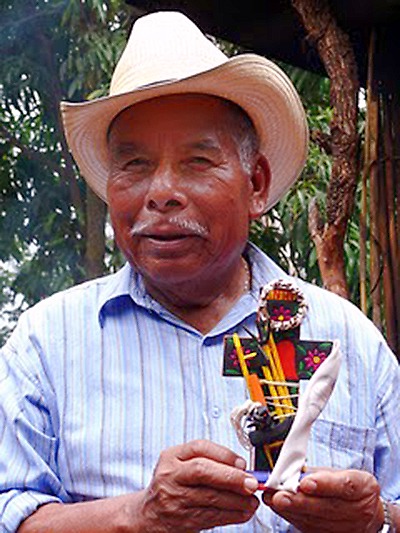
While Jiménez and Cruz were shaping the carving renaissance near Oaxaca City, a third figure was beginning his journey in the mountain village of La Unión Tejalapam.
After returning from working in the Bracero Program in the United States, Martín Santiago sought a way to support his family beyond farming.

He began carving religious figures, angels, and Day of the Dead scenes, with his daughters painting the finished pieces.
His work reflected daily life and faith, blending rustic charm with narrative richness. Each sculpture told a story (a market day, a rodeo, a procession) drawn from his community’s experiences.
Martín’s influence extended throughout his family, creating an entire generation of Santiago carvers who would turn La Unión into another cornerstone of the Oaxacan carving tradition.
A Turning Point for Oaxaca
By the late 1960s and early 1970s, the growing popularity of Mexican folk art brought attention to Oaxaca’s carvers.
Artisans who once sold masks for a few pesos began to earn real income from their craft. For many families, this was the first time art offered a sustainable livelihood.

As tourism increased, the colorful carvings became highly sought after by collectors and museums. What began as a local curiosity evolved into a symbol of cultural identity and economic hope.
Entire villages organized themselves around carving workshops, passing knowledge from parents to children and turning rural homes into small studios.
Despite the commercialization that followed, the essence of the tradition remained: imagination rooted in community, faith expressed through color, and creativity born from necessity.
Each carving, whether a fierce jaguar, a dancing skeleton, or a gentle armadillo, carried the spirit of Oaxaca: alive, resilient, and endlessly inventive.
The Craft: Materials, Symbolism, and Styles
Every Oaxacan wood carving begins with a single piece of copal, a tree that grows abundantly in the warm valleys of southern Mexico.
Its wood is pale, soft, and aromatic, a material that seems almost alive in the hands of an artisan. When freshly cut, it yields easily to the blade, yet when sanded, it becomes smooth and luminous like porcelain.
From this humble material, entire worlds are born: jaguars with wings, dancing skeletons, saints, and mythical beasts that blur the line between dream and reality.
The Copal Tree

The copal tree (Bursera glabrifolia) is sacred in Oaxaca.
Its resin has been used since pre-Hispanic times as incense in rituals dedicated to the gods. When the Spanish arrived, Indigenous people continued burning copal during Christian celebrations, keeping its spiritual essence alive beneath a new religion.
For carvers, copal represents both practicality and meaning.
The wood’s fine grain allows delicate detail, and its scent connects them to ancestral ceremony. Artisans carefully choose branches whose natural curves suggest movement like a crouching cat, a bird in flight, or the bend of a snake about to strike.

Once the wood is selected, it must be carved quickly before it dries and hardens.
Using machetes, pocket knives, and simple blades, the artisan roughs out the basic form in a single session.
Each stroke is guided not by a sketch, but by instinct and experience. The figure emerges gradually as if the wood itself reveals what it wants to become.
Tools and Techniques
In the villages of Arrazola, Tilcajete, and La Unión, carving is a family affair.
Workshops often consist of an open courtyard shaded by a tree, a table scattered with knives, and a pile of wood waiting to be transformed.
- Machetes are used for large cuts, to define the body or limbs.
- Kitchen knives and razor blades refine details such as scales, feathers, or facial expressions.
- Sandpaper gives the figure its final smoothness before painting.

Once carved, the piece is left to dry completely, sometimes for several weeks.
Copal, however, attracts insects that bore into the wood, so a common preservation method is to wrap the carving in a plastic bag and freeze it for a week. This kills any larvae that might later damage the piece.

After drying, the figure is sanded again until it feels silky to the touch. The surface must be flawless, because every brushstroke of paint will highlight even the smallest imperfection.
Painting and Decoration
Painting transforms the carving from a block of wood into a vibrant creature full of life.
In the early years, artisans used aniline dyes, which produced bright but unstable colors that faded in sunlight. Most now use acrylic paints, which allow richer hues and intricate layering.

In San Martín Tilcajete, painting has become an art in itself.
Women, many of whom come from families of embroiderers, brought their knowledge of pattern and rhythm into the decoration process. Their brushwork mirrors the stitches once sewn into traditional aprons and textiles.
The motifs often include:
- Zapotec geometric symbols, representing rain, fertility, and protection
- Floral and animal patterns, recalling the natural world
- Spirals and dots, expressing motion and spiritual energy
Colors are chosen intuitively but always carry emotion: turquoise for water and sky, red for vitality, yellow for sunlight, and purple for transformation.
Each pattern is painted freehand, line by line, sometimes under magnifying lenses for precision. A single piece may take days or weeks to finish, depending on its complexity.
The Role of Family Workshops
Originally, men carved alone and signed their work.
But as interest in Oaxacan carvings grew through the 1970s and 1980s, entire families began participating. Today, each member plays a role in the process:
- Men carve and prepare the wood.
- Children and elders sand and smooth the pieces.
- Women paint, blending traditional embroidery motifs with new designs.
In some homes, three generations work side by side.

This family structure not only supports the household but ensures that knowledge and technique are passed down naturally. Many of the best-known artists in Oaxaca began sanding figures at five or six years old and painting by their early teens.
Because workshops are often built around trust and local pride, few hire outsiders.
Teaching non-family workers could mean sharing trade secrets, and many artisans see their specific painting style as their family’s signature — an inheritance as valuable as the carving tools themselves.
From Rustic Toys to Collector’s Art
When Oaxacan carvings first appeared in markets, they were simple and roughly shaped small cats, dogs, donkeys, or bulls painted with just a few colors.
Tourists bought them as toys or souvenirs. Over time, as artisans refined their craft, the carvings became more detailed and imaginative.
Collectors began seeking unique, artist-signed pieces rather than mass-produced ones, and museums around the world started to display them as examples of living folk art.

Today, there is a clear distinction between:
- Commercial carvings, made quickly for tourist markets, and
- Fine art carvings, created slowly, signed, and meticulously painted.
The latter can take weeks to complete and are recognized internationally for their technical mastery and symbolism.
Symbolism and Meaning
Though each artist has a personal style, Oaxacan carvings share a common language of symbols that reflect both Indigenous worldview and Catholic influence.
- Animals represent strength, wisdom, or guidance. The jaguar, for example, symbolizes power and transformation.
- Birds stand for freedom and communication between worlds.
- Skeletons and devils reflect Mexico’s acceptance of death as part of life, echoing the spirit of the Day of the Dead.
- Alebrijes, with their mix of species and colors, embody imagination itself and the fusion of dream and reality.
For many artisans, carving is also a form of prayer. The act of giving shape to wood connects them to the divine. Each cut and brushstroke becomes an offering, transforming a fallen branch into a guardian of stories, memories, and myth.
The Diversity of Styles
Within Oaxaca’s carving tradition, styles vary greatly by region and family:
- Arrazola often favors realism, with elegant forms and naturalistic painting.

- Tilcajete is known for its bold color and elaborate Zapotec patterns.

- La Unión Tejalapam keeps a rustic, narrative quality, producing multi-figure scenes of markets, festivals, and everyday life.

Some artists create fine, delicate work that looks almost sculptural, while others prefer rougher, more expressive textures.
A Shared Heritage
More than a technique, Oaxacan wood carving is a dialogue between generations.
It unites ancestral craftsmanship with modern vision, individual expression with community strength.
Each figure carries within it both the trace of a machete and the tenderness of a paintbrush which represents the union of strength and grace that defines the spirit of Oaxaca.
Artists, Towns, and Legacy
Behind every Oaxacan carving lies not just one artist, but a community.
Each town has its own rhythm, its own stories, and its own way of bringing the copal wood to life. What unites them is imagination, the ability to look at a branch and see a jaguar, a mermaid, or a guardian spirit waiting inside.

Over the past six decades, three towns have become the heart of this tradition: San Antonio Arrazola, La Unión Tejalapam, and San Martín Tilcajete. Together they form a creative triangle that has carried Oaxaca’s carving heritage to the world.
San Antonio Arrazola
Just ten kilometers from Oaxaca City, San Antonio Arrazola is the birthplace of modern Oaxacan wood carving.
It was here that Manuel Jiménez, the father of the tradition, first began transforming wood into creatures of myth and imagination. In the 1970s, tourists, art collectors, and folk art dealers traveled to Arrazola just to visit his home and watch him work.
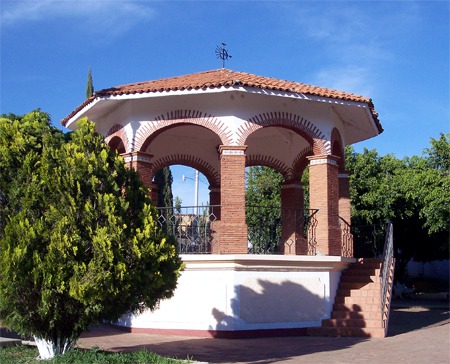
Jiménez’s success inspired his neighbors, who began carving their own figures.
By the 1980s, nearly every street had at least one small workshop, and carving had become the town’s lifeblood. Even though Jiménez kept many of his methods within his family, the spark had already spread.
Today, Arrazola remains a leading center for fine, detailed carvings and realistic animal figures, with workshops that balance tradition and innovation.
Generations of artists continue the Jiménez family’s legacy, including:
- Angélico and Isaías Jiménez Hernández, sons of Manuel, who create intricate alebrijes and spiritual figures with refined painting.
- Armando and Moisés Jiménez Aragón, known for large, expressive animals with flowing shapes and vibrant colors.
- Mario Castellanos González and Reina Ramírez González, who carve complex lizards and marine creatures painted with geometric Zapotec motifs.
- Bertha Cruz Morales and Alfonso Castellanos Ibáñez, celebrated for subtle color palettes and finely painted patterns.
- Narciso González Ramírez and Rubí Hernández Pino, who became famous for their lean, expressive dogs painted in bright, joyful hues.
In Arrazola, art is both a calling and a family inheritance. Walking through the town, one can hear the rhythmic tap of chisels and see entire families gathered under shaded patios, painting, carving, and laughing together.
La Unión Tejalapam
Nestled in the hills west of Oaxaca City, La Unión Tejalapam is quieter than Arrazola but equally rich in tradition.
It never drew the same level of tourism, yet its isolation allowed for a distinct, rustic style that feels closer to storytelling than sculpture.
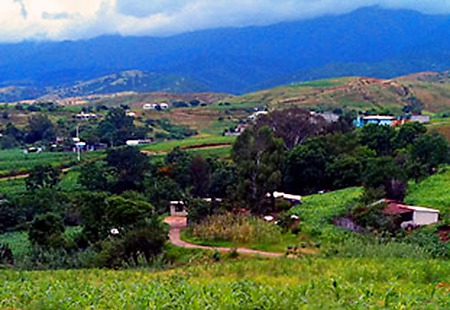
Here, art reflects community life — processions, festivals, and scenes from daily existence.
The carving tradition of La Unión was founded by Martín Santiago after his return from the United States in the 1960s.
Unable to make a living from farming alone, he began carving angels, saints, and Day of the Dead figures, soon joined by his daughters, who painted the finished pieces.
This family approach spread across the town, giving rise to an entire generation of Santiago artisans whose works now circulate around the world.
Each member of the Santiago family brings something unique:
- Martín Santiago Cruz, known for religious scenes and delicate bouquets of carved flowers.
- Quirino and Plácido Santiago Cruz, who carve nativity sets, angels, and rustic devils painted in vivid tones.
- Maximino Santiago García, who creates detailed processions, markets, and schoolyard scenes filled with human warmth.
- Eloy and Calixto Santiago, who specialize in horse-drawn carts and animal musicians painted by their wives with bold color combinations.
- Gabino Reyes López, who surprises collectors with imaginative concepts like cows and horses bearing the Virgin of Guadalupe on their flanks.
While other towns moved toward polished perfection, La Unión preserved a sense of spontaneity.
Its carvings retain the rough knife marks, visible textures, and playful expressions that speak of rural honesty and creative freedom.
San Martín Tilcajete
Twenty-five kilometers south of Oaxaca City lies San Martín Tilcajete, one of Mexico’s most vibrant and artistic towns.
Its name comes from the Zapotec words til (cochineal dye) and cajete (water well), referring to the red pigment once made there and the well that sustained the community.

The town has existed for more than two thousand years, but its identity as a center of carving began in the mid-twentieth century thanks to the generosity of Isidoro Cruz.
Cruz not only refined his own craft but also taught others freely, helping Tilcajete grow into a united community of artisans.
Unlike Arrazola, where workshops often guarded their techniques, Tilcajete became known for collaboration and collective progress.
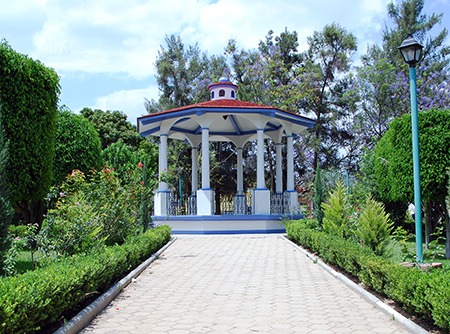
The town also had a long tradition of weaving and embroidery, and when women began painting the carvings, they carried that same sense of rhythm and design into their brushwork.
The result is Tilcajete’s signature style: vibrant color, intricate patterns, and bold geometric motifs inspired by ancient Zapotec art.
Among its many notable families are:
- Jacobo Ángeles Ojeda and María Ángeles, internationally acclaimed for their large, human-animal hybrids decorated with Zapotec patterns. Their pieces have been exhibited in major museums and are collected worldwide.
- The Fuentes Family — Epifanio, Laurencia, Zenén, Efraín, Iván, and Rubí — who have each developed a distinctive style, from elegant angels to elaborate mermaids and mythic beasts.
- Jesús Sosa Calvo, famous for whimsical cats and dogs covered in his signature amoeba-like patterns.
- Inocencio Vázquez Melchor, who carves humorous multi-figure scenes such as drunken angels, musicians, and nahuales at cantinas.
- The Xuana Family, renowned for nativity scenes, masks, and animal miniatures made collaboratively by fathers and daughters.
- Luis Sosa Calvo, who creates elaborate multi-part creatures that fit together like puzzles.
Walking through Tilcajete today feels like walking through an open-air gallery. Every home is a workshop, every doorway leads to color, and every wall displays a riot of painted creatures that seem to come alive under the Oaxacan sun.
A Living Economy and a Global Stage
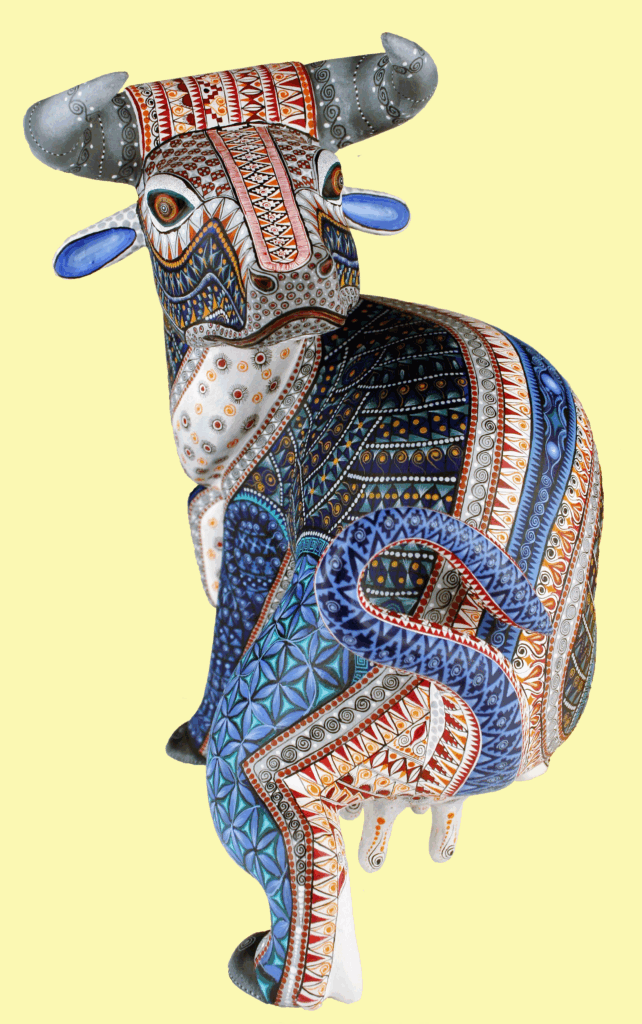
What began as a local craft for supplementing income has become one of Oaxaca’s most important cultural exports.
The rise of folk art markets in Mexico City and abroad brought Oaxacan carvings to galleries, museums, and collectors across the Americas, Europe, and Asia.
This success has improved the quality of life in many villages, funding education, community projects, and the preservation of Indigenous traditions.
However, success also brought challenges.
The demand for cheap souvenirs led to mass production that often overshadowed the artistry of family workshops.
To counter this, organizations such as FONART and local cooperatives have promoted authentic, artist-signed works, helping artisans gain fair recognition and prices.

Sustainability has also become a concern. Copal trees, once abundant, are now protected, and many communities have started reforestation programs to ensure the craft’s future.
Workshops in Tilcajete and Arrazola now plant copal saplings each year, teaching children not only to carve but also to care for the trees that make their art possible.
Legacy and Meaning
Oaxacan wood carvings are more than beautiful objects; they are expressions of identity, resilience, and imagination.
They embody centuries of cultural fusion including Indigenous mysticism, colonial religion, and modern creativity, all shaped by the hands of families who turned hardship into art.
Each piece tells a story: a jaguar that guards the night, a skeleton dancing joyfully, a mermaid gazing skyward.
Every carving carries within it the same spirit that has always defined Oaxaca, one of transformation, continuity, and color.
Through their work, the artisans of Arrazola, Tilcajete, and La Unión remind the world that tradition is not static. It grows, adapts, and dreams.
From a simple branch of copal, they carve not just figures, but fragments of the soul of Mexico itself.

Leave a Reply